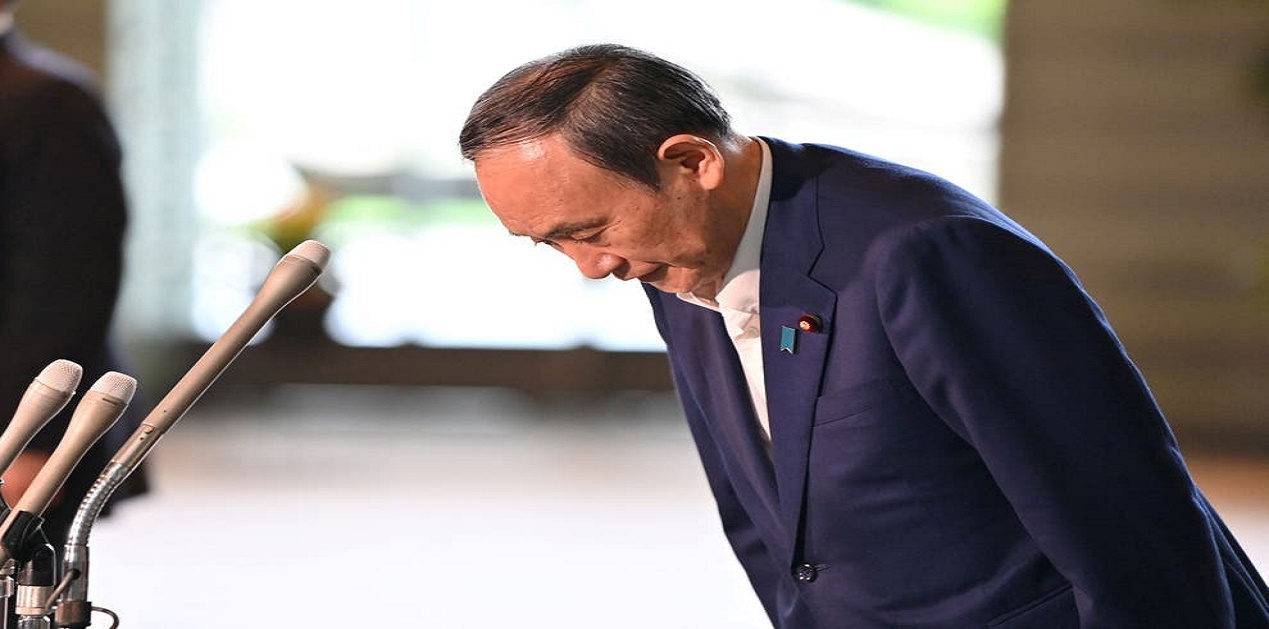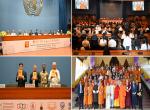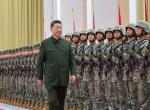In an unexpected turn of events on Sept 03, Prime Minister Yoshihide Suga announced to media that he intended to step down as Prime Minister and would withdraw his candidacy from the Liberal Democratic Party (LDP) presidential elections due September end. Suga noted that a huge amount of energy was needed when considering COVID measures and the election campaign and it was difficult to manage both1. Concurrently, the term of current Lower House also expires on Oct 21 mandating that elections be held by Oct 17 to late November. This sequence of events means that the new party president would effectively become the next Prime Minister of Japan due to LDP’s majority in the Parliament.
After Prime Minister Shinzo Abe’s resignation owing to health issues in September 2020, the LDP handed Yoshihide Suga a one-year party president term (instead of the regular three-year term) by limiting rank-and-file votes and viewing it as largely a caretaker office. Suga’s term was due to complete on September 30. With no incumbent seeking reelection now and lack of clarity on the frontrunners, there have been fears of a return to the erstwhile era of revolving door Prime Ministers in Japan who oversaw incredibly short tenures.
August, this year, has been filled with contentious debates within the LDP on replacing top executives and calling for a snap election in mid-September. Suga’s plunging public ratings, controversies around his handling of the pandemic including a key loss in the Tokyo metropolitan assembly election under his home constituency had triggered staunch criticisms of his stalling party president elections to continue in power. Of particular concern has been inducing the resignation of LDP Secretary-General Toshihiro Nikai who has become the longest Secretary-General (5 years) in the party's history. Nikai’s early endorsement of Suga was decisive in Suga’s assuming office last year. Suga, in turn, returned the favour with allowing Nikai to continue in his post and assigning cabinet posts for his faction.
During Abe’s tenure as party president, the influence of factions had waned as he was able to centralize greater power in the Prime Minister’s office. However, with the Suga administration, Nikai’s 47-member group began exercising outsized influence despite it being the fourth largest faction in the party after the Hosoda (96 members), Aso (53 members) and Takeshita (53 members) factions. This has activated factional rivalries in vying for the top job in the LDP. Former Foreign Minister, Fumio Kishida who leads his own faction, Kochikai, with 47 members was the first to throw his hat in the ring. He also announced his campaign plank for a 30 trillion yen ($273 billion) economic package to stimulate Japan’s Covid beleaguered economy.
Taro Kono, currently Minister for Administrative Reform and Regulatory Reform who also coordinates the nation’s vaccine program, is another lead contender. Kono who belongs to the Finance Minister Taro Aso’s faction, has consistently topped public polls to be Japan’s next leader. While Suga has backed his bid, Kono has not been yet assured of his faction’s support. However, in a recent development, Shigeru Ishiba, a former Defence Minister, and an outspoken Abe critic has decided against running and instead is supporting Kono’s candidacy to secure his influence within the party. Another prominent contender, former Internal Affairs Minister Sanae Takaichi, has received backing of former Prime Minister Abe, highlighting her as a successor to the conservative policies pursued by Abe. Other potential candidates are Acting LDP Secretary-General Seiko Noda and LDP policy Chief Hakubun Shimomura.
With campaigning to start on Sept 17 and voting on Sept 29, the party elections will be held with senior LDP lawmakers and 1.13 million rank-and-file members’ holding 383 votes each. The majority winner from a total of 766 votes would become the next LDP party president. A younger generation of LDP lawmakers complicates the factional lines dominated by the old guard in deciding the vote. Factional support in the LDP is the key for fundraising, networking, and lobbying for members to define their career trajectory. However, today the average age of the 276 LDP lower house members is 59, and those under 60 make up almost half. Almost a fifth do not belong to a faction2. Yet, it is difficult to portend success for Kono who enjoys great popularity among the younger members or for Takaichi who has validation from the predominant Hosoda faction.
Suga, who enjoyed a 74 per cent approval rating at his inauguration, saw his support plunge under 30 percent in August 2021. Despite controversies and challenges emanating from the delay in suspension of the controversial $12 billion ‘Go to Travel’ subsidy programme to a superfluous altercation on withholding of scholars from an advisory panel to slow and tedious rollout of vaccines amidst hosting Olympics, Suga’s term has seen significant achievements. His populist promises such as lowering mobile phone rates and insurance for fertility treatments were applauded. He also set up a new digital agency to unify the disparate government systems across Japan. The lack of adequate IT infrastructure in hospitals and schools had left Japan unprepared for widespread telemedicine and distance learning3. Suga also pledged to make Japan carbon neutral by 2050. But the greatest legacy of the Suga administration will lie in internationalizing the issue of Taiwan especially by articulating Japan’s concerns about Taiwan that reflected in numerous bilateral statements as well as the Carbis Bay G7 summit.
Suga’s successor will inherit the multifold challenges of economy, security, demography etc. facing Japan that has been further compounded by the pandemic. Further, he will have to rise up to the expectations of the international community in fulfilling Japan’s responsibilities in promoting a rules-based order in the Indo-Pacific. An in-person Quad leaders meeting has been scheduled by Washington in September end. It will remain to be seen who will represent Japan then.
Endnotes:
- Nikkei Asian Review: Japan's Yoshihide Suga to resign as prime minister, September 03, 2021, https://asia.nikkei.com/Politics/Japan-s-Yoshihide-Suga-to-resign-as-prime-minister
- Nikkei Asian Review:Generational divide clashes with factions in Japan's ruling party, September 05, 2020, https://asia.nikkei.com/Politics/Generational-divide-clashes-with-factions-in-Japan-s-ruling-party
- Nikkei Asian Review: Japan launches agency to undo 'digital defeat': 5 things to know, September 01, 2020, https://asia.nikkei.com/Politics/Japan-launches-agency-to-undo-digital-defeat-5-things-to-know
(The paper is the author’s individual scholastic articulation. The author certifies that the article/paper is original in content, unpublished and it has not been submitted for publication/web upload elsewhere, and that the facts and figures quoted are duly referenced, as needed, and are believed to be correct). (The paper does not necessarily represent the organisational stance... More >>
Image Source: https://static.independent.co.uk/2021/09/03/07/PRI197685380.jpg?width=990&auto=webp&quality=75











Post new comment